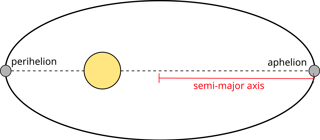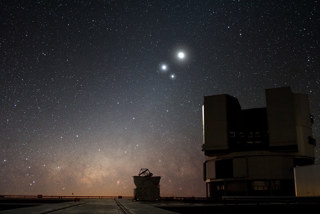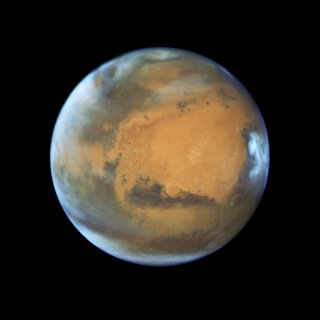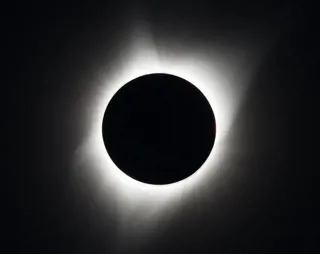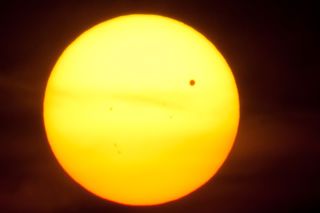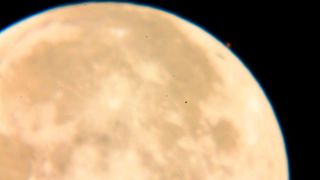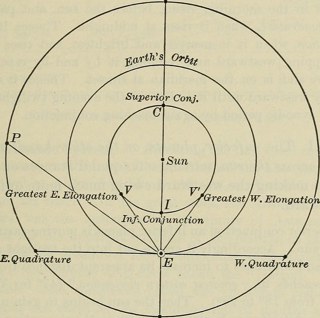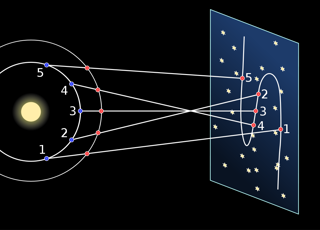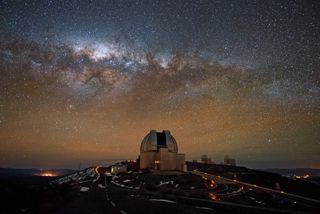
Astronomical phenomena
- 17th Jan 2023
- Author: David Southworth
Perihelion and aphelion
As orbits are elliptical rather than perfectly circular, the distance of a planet from the Sun varies through its orbit. The extremes of this variation are given the names perihelion, for the planet’s closest point to the Sun, and aphelion, for the planet’s furthest point from the Sun.
These names are specific to the distance from the Sun, so are the most commonly used. However, other terms are used in relation to other bodies. For example, the equivalent points for bodies that orbit the Earth – the Moon and artificial satellites – are known as perigee and apogee.
And all of these are examples of the more general terms for the closest and furthest points of any orbiting body relative to its primary body – periapsis and apoapsis.
Conjunction
Speaking of near and far, in its simplest form a conjunction occurs when two bodies appear close together in the sky. For example, conjunctions of the Moon with one of the other planets of the Solar System occur fairly frequently. These are usually easy to see with the naked eye, with a bright planet appearing close to the Moon in the sky. In reality, of course, these bodies remain extremely far apart; they only appear close together from the perspective of the observer on Earth.
In more technical terms, two objects in conjunction don’t always appear close together. Specifically conjunction occurs when they share the same right ascension. This is a celestial coordinate with respect to the sky and is equivalent to what longitude is to the surface of the Earth. However, since the Moon, the Earth and all planets in the Solar System orbit in similar planes, a conjunction between two of those bodies will always involve them appearing close together in the sky.
Opposition
Two bodies are in opposition when they are located in directly opposite directions from the point of observation. When we talk about a planet being in opposition, we mean that it is on the opposite side of the Earth compared to the position of the Sun.
This is only possible for planets whose orbits are outside that of Earth (known as the superior planets); Mercury and Venus – the inferior planets – are always closer to the Sun than the Earth is, so it’s not possible for them to be in opposition.
When a planet is in opposition, by definition it will also be at approximately its closest point to Earth and fully lit up by the Sun, making opposition a good time for observing a planet.
At opposition, a planet will appear slightly brighter and bigger than at other points in its orbit. Additionally they'll be visible throughout the night rising in the east as the Sun sets and setting around dawn the following day - but a planet will reach it's highest point in the southern sky around midnight making that the best time to view it!
Eclipse, transit, and occultation
When two bodies line up perfectly with the Earth, rather than just being close to lined up, this is known as syzygy – an excellent word for any Scrabble enthusiasts to know! This can lead to special cases of conjunction – an eclipse, transit or occultation.
-
![A total solar eclipse is seen on Monday, August 21, 2017 above Madras, Oregon.]()
NASA/Aubrey Gemignani An eclipse occurs when one body passes through the shadow of another. The best known example is a solar eclipse, where the Moon passes between the Earth and the Sun. The coincidence of the Moon and Sun appearing the same size in the sky from Earth is what allows the rare and dramatic sight of a total solar eclipse, with the Moon’s disc perfectly covering the Sun.
-
![Transit of Venus in Front of the Sun, 2012.]()
Ed Schipul CC BY 4.0 A transit is less dramatic and occurs when a smaller object passes in front of one that appears much larger in the sky. For example, Mars’ moons – Phobos and Deimos – are too small to eclipse the Sun when seen from the surface of Mars. Instead when one of them passes in front of the Sun a transit is observed. Transits of Venus, passing in front of the Sun, have famously been used to further our understanding of the Solar System. Observations of the transit in 1639 vastly improved the accuracy of our estimates of the size of Venus and the distance to the Sun.
-
![Lunar occultation of Mars, 2022.]()
Derek Robson Occultations in general are when one celestial body passes in front of another, completing covering or obscuring it. If the Moon passes directly in front of a star of planet we get on occultation and similarly a planet can pass in front of a star and occult it. Rarest is when a planet passes in front of another – if it partially obscures it, we call it a transit but if it completely covers it, we get an occultation.
Greatest elongation
While opposition is only possible for superior planets, the point of greatest elongation is only really meaningful for inferior planets.
Elongation refers to the angle between the positions of two bodies from the perspective of the observer. Again, in relation to planets, this refers to the positions of that planet and the Sun, as seen from Earth.
So the point of greatest elongation occurs when an inferior planet is at its greatest angular separation from the Sun, which will occur when the line of sight from Earth is at a tangent to the planet’s orbit. (Tangent – a straight line from the Earth that touches the curved orbit at a point without crossing it).
Retrograde motion
Retrograde motion refers to a body moving, or appearing to move, in the opposite direction to its normal motion.
All the planets orbit the Sun in an anti-clockwise direction (when viewed looking down on the Sun’s North Pole). However, the differing rates of orbit mean that their orbital motion doesn’t always look so consistent when viewed from Earth.
When considering the apparent motion of the planets as viewed from Earth (how they appear to move to us), we talk about their motion relative to the fixed points of the incredibly distant stars. This is so we can separate out the dominant effect of objects apparently moving east to west nightly due to the rotation of the Earth.
Relative to the stars, though, all the superior planets move slowly eastwards due to their revolution around the Sun. However, as the Earth’s orbital period is shorter than those of the superior planets, Earth periodically ‘overtakes’ them. When this occurs, the planet will instead appear to change direction in the sky and, for a short time, move westward relative to the stars. This is what is generally meant by a planet showing retrograde motion.
The sky is full of movement – like driving on the road it has its fair share of close approaches, line ups and overtakings! These astronomical phenomena are way more fun to observe though!
Full references / credits:
(Banner image) La Silla, ESO's first observatory site, at sunset. Credit: ESO/José Francisco Salgado (josefrancisco.org)
(1) The perihelion, aphelion and semi-major axis of elliptical orbit around the Sun. Credit: public domain
(2) Conjunction of the Moon, Venus and Jupiter taken from ESO’s Very Large Telescope (VLT) observatory at Paranal. Credit: ESO/Y. Beletsky
(3) Opposition of Mars. Credit: NASA
(4a) A total solar eclipse is seen on Monday, August 21, 2017 above Madras, Oregon. Credit: NASA/Aubrey Gemignani
(4b) Transit of Venus in Front of the Sun, 2012. Credit: Ed Schipul CC BY 4.0 (https://www.flickr.com/photos/16638697@N00/7344089208)
(4c) Lunar occultation of Mars, 2022. Credit: Derek Robson
(5) Diagram showing planets at the points of greatest elongation. Credit: public domain
(6) Retrograde Motion. Credit: Brian Brondel CC BY-SA 4.0 (https://en.wikipedia.org/wiki/Apparent_retrograde_motion#/media/File:Retrograde_Motion.bjb.svg)

